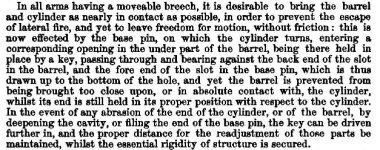Abby Mouat, over at Cornell Publications, has put some of her sparsely-ordered reprints on the Internet for the public's perusal, free of charge.
One of them is Col. Samuel Colt's paper "On the application of machinery to the manufacture of rotating chamber-breech firearms, and their peculiarities". It's from the Institute of Civil Engineers Proceedings of 1851.
The paper is less than 40 pages, but it's very interesting. At the end is an appendix by Charles Dickens, describing Colt's London factory.
This was back in the day when topics were presented in person before the members. The paper is actually a summary of Colt's presentation over the course of two days.
http://www.cornellpubs.com/downloads/on_the_application_of_machinery_to mfg-1855-colt-7mb.pdf
EDIT: Fixed the wandering URL
One of them is Col. Samuel Colt's paper "On the application of machinery to the manufacture of rotating chamber-breech firearms, and their peculiarities". It's from the Institute of Civil Engineers Proceedings of 1851.
The paper is less than 40 pages, but it's very interesting. At the end is an appendix by Charles Dickens, describing Colt's London factory.
This was back in the day when topics were presented in person before the members. The paper is actually a summary of Colt's presentation over the course of two days.
http://www.cornellpubs.com/downloads/on_the_application_of_machinery_to mfg-1855-colt-7mb.pdf
EDIT: Fixed the wandering URL
Last edited:

